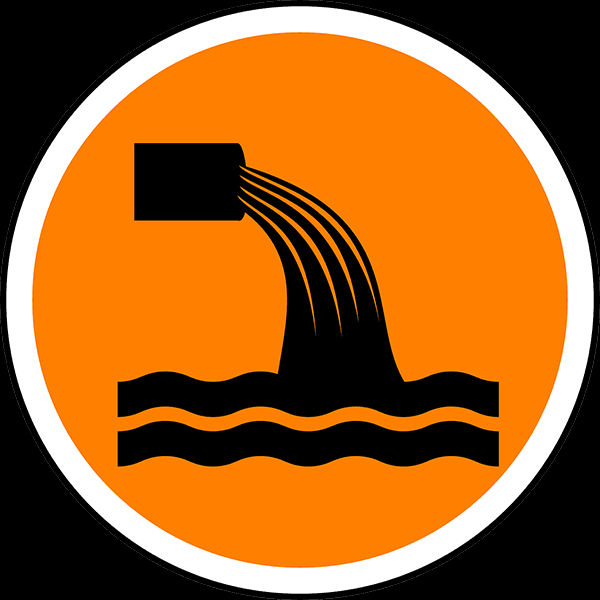Reclaim Waste Fundamentals Explained
Reclaim Waste Fundamentals Explained
Blog Article
The Single Strategy To Use For Reclaim Waste
Table of ContentsThe Only Guide for Reclaim WasteAbout Reclaim WasteFacts About Reclaim Waste UncoveredThe Reclaim Waste IdeasThe 10-Second Trick For Reclaim Waste
Check out the types, occurrences, and kinds of liquid waste. Domestic sewage waste refers to the waste and items from a household sewage-disposal tank. This sort of waste is created by human beings in houses, schools, and other structures. This only consists of sewage-disposal tanks that have a drain field. The proper management and disposal of residential sewage waste call for liquid waste to be moved to a sewer therapy plant where the correct methods and tools are related to cleanse and deal with waste.
Commercial waste often includes possible hazards, such as combustible products or a mix of fluid and strong waste products, and requires a much more innovative and comprehensive disposal procedure. The disposal of business waste usually entails the filtering of waste before transport to ensure safe and correct disposal. Industrial waste is produced from results and overflow of commercial processes and manufacturing.
This type of waste can not use the exact same sewage management transport or processes as septic or commercial fluids. The hazardous waste administration procedure calls for the inspection and screening of fluid waste before it undertakes the disposal procedure (liquid waste removal). Runoff waste is the fluid waste that originates from drainage and excess stormwater in highly booming locations or cities
Overflow waste can trigger contamination and flooding otherwise managed effectively. Learn more about sewer cleansing and waste monitoring. Making certain appropriate waste management can protect against calamities and lower environmental harm. Both individuals in residential setups and specialists in industrial or production industries can take advantage of comprehending the processes and policies of liquid waste management.
Top Guidelines Of Reclaim Waste
Contact PROS Solutions today to learn regarding our waste management and disposal services and the correct ways to look after the fluid waste you produce.
(http://peterjackson.mee.nu/do_you_ever_have_a_dream#c2256)
Do you understand what happens to your water when you draw the plug, flush the commode or drain the cleaning maker? No? Well, it's worth knowing. This supposed 'wastewater' is not just a crucial source however, after therapy, will certainly be launched to our land, rivers or the sea. Utilized water from toilets, showers, baths, kitchen sinks, laundries and industrial procedures is recognized as wastewater.

water made use of to cool machinery or tidy plant and equipment). Stormwater, a type of wastewater, is drainage that flows from farming and metropolitan areas such as roofing systems, parks, yards, roadways, paths and gutters right into stormwater drains pipes, after rainfall. Stormwater flows unattended straight to local creeks or rivers, ultimately Discover More Here getting to the sea.
Reclaim Waste - The Facts
In Queensland, many wastewater is treated at sewage treatment plants. Wastewater is transported from domestic or commercial websites via a system of drains and pump terminals, understood as sewerage reticulation, to a sewage treatment plant.
The Division of Natural Resources advises neighborhood federal governments regarding managing, operating and keeping sewage systems and treatment plants. In unsewered locations, city governments may call for homeowners to set up private or family sewage treatment systems to treat domestic wastewater from toilets, cooking areas, restrooms and washings. The Division of Natural Resources authorizes the use of home systems when they are shown to be efficient.
In some new class, therapy of some stormwater to eliminate trash, sand and crushed rock has begun using gross pollutant traps. Wastewater therapy takes place in 4 stages: Removes solid matter.
Wastewater then flows into huge containers where solids resolve and are eliminated as sludge. Oil and residue are skimmed from the surface. Uses little living microorganisms referred to as micro-organisms to break down and get rid of staying dissolved wastes and great bits. Micro-organisms and wastes are incorporated in the sludge. Gets rid of nitrogen and phosphorus nutrients that might trigger algal blooms in our waterways and intimidate aquatic life.
The Of Reclaim Waste
Nutrient removal is not readily available at all sewage therapy plants since it needs pricey specialist equipment. Clear fluid effluent created after therapy might still contain disease-causing micro-organisms - liquid waste removal melbourne.

This typically indicates wastewater needs to be dealt with or pollutants eliminated prior to it can be released to rivers. Most wastewater streams right into the sewerage system. Under the Act, city governments administer approvals and permits for eco appropriate activities (Periods) involving wastewater launches that may have a local effect. The division provides authorizations and permits to Periods including wastewater launches that could have a regional or statewide effect.
The Main Principles Of Reclaim Waste
Tracking supplies accurate info regarding water high quality and can verify that licence conditions are being met. The information gotten via surveillance gives the basis for making water top quality choices.
Report this page